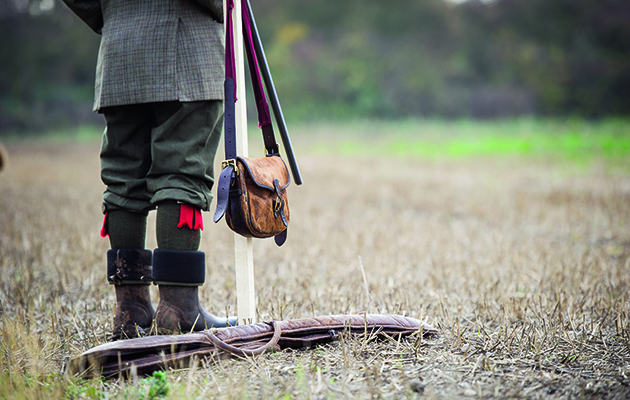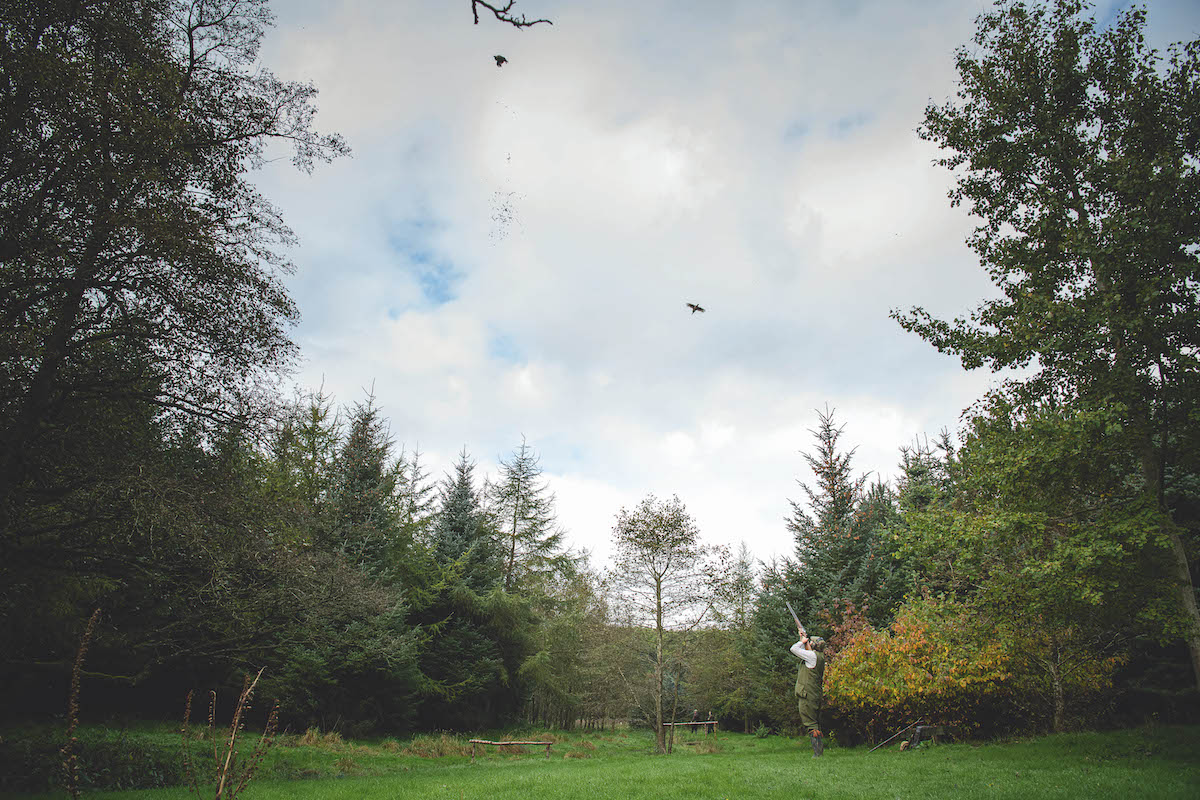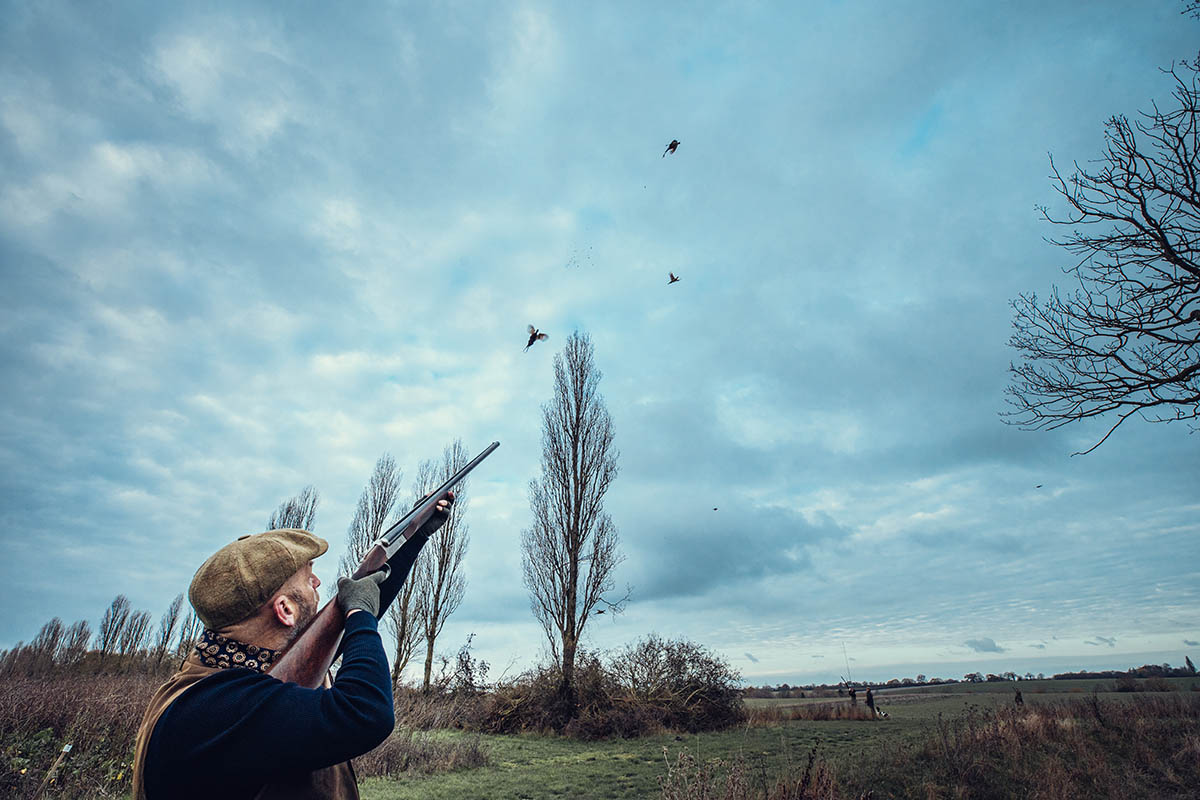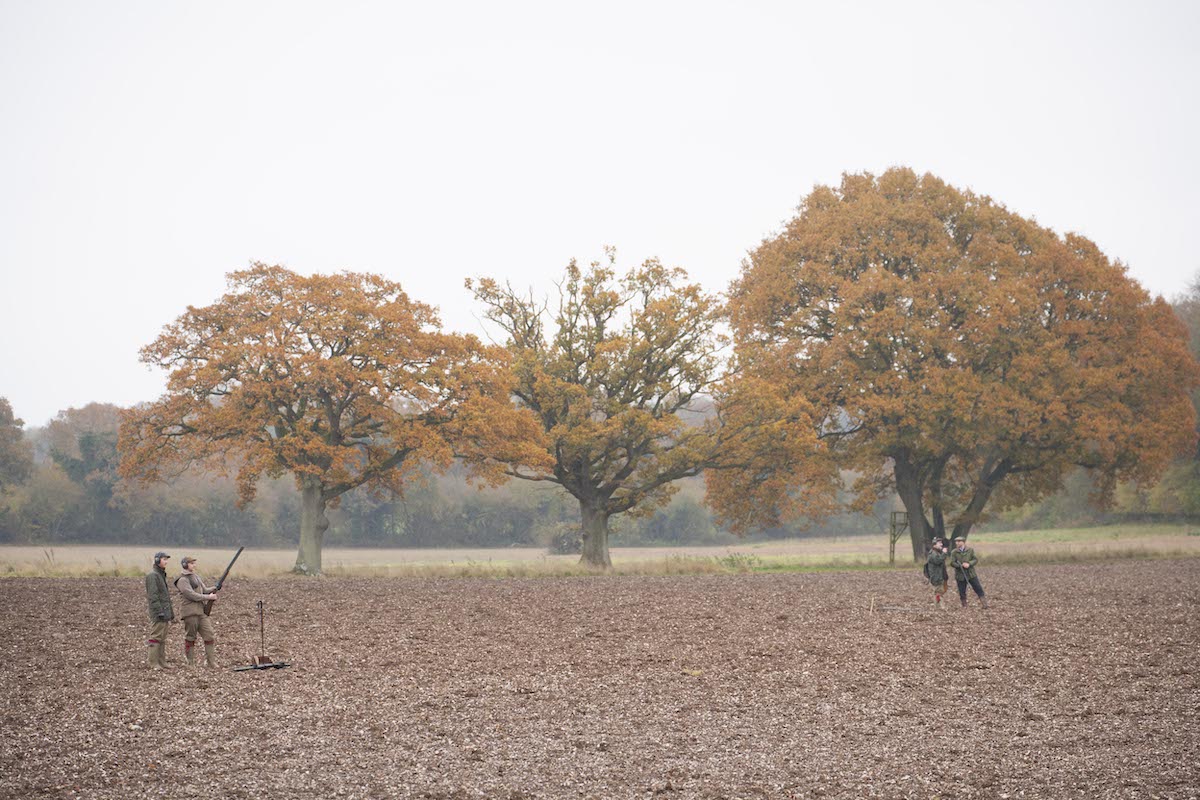Pheasant shooting tips
Tom Payne on how to improve your shooting and bag more birds

Looking forward to going out into the field in the next few weeks? I’ve compiled a list of pheasant shooting tips for you to follow, so that you can check your technique and that you are doing things correctly. (You might also like to read what to expect on your first day pheasant shooting.)
Tom’s top pheasant shooting tips
- Pay attention to the breed of pheasant you are shooting on the day. They are all different and can all behave slightly differently in flight. Their size and speed vary, as does their manoeuvrability in different conditions.
- Remember, your footwork is the building block to any shot. If you get your feet wrong, the shot will go wrong. Your feet should move because of what the bird is doing in flight — not because the rulebook says you have to move. Move your feet correctly before you mount the gun and make the shot. (Read our list of the best shooting boots here.)
- Good, consistent gun mount is so important. Reduce the factors that could go wrong in mounting the gun consistently on to your pheasants. Address the bird properly and set yourself up for the shot. Do not rush or panic. Finish your shot properly by watching the bird fold in the air.
- Fieldcraft is so important. The more you understand what is going on, by being able to read a drive and take into account the conditions, for example, the more you will understand the birds in flight.
- Keep smiling, even when the going gets tough.
Let’s go into the above in a bit more detail.
Footwork and balance
In all forms of driven shooting, good footwork is the building block for any shot, and with good footwork comes good, controlled balance. Without these two factors at the start, shooting consistently is not possible.
- Footwork is moving with what the bird is doing
- Move while watching the bird in flight
- Move your feet without mounting your gun, preparing yourself for the shot
- Don’t start moving and mounting because you will pull the muzzles away from the line of the bird
- The bird dictates where you move your feet if you watch it correctly

Place your feet correctly before mounting your gun
If you start moving and mounting you will end up in a whole world of trouble, pulling the muzzles away from the line of the bird and generally tying yourself in knots. Remember, the bird dictates where you move your feet if you watch it correctly.
Gun mount
In order to shoot consistently, you must also be able to mount your gun smoothly and accurately on to your moving bird. This will enable you to read the speed, distance and direction of the bird accurately and in one smooth movement, allowing you to make the shot at the right time. If you can’t get your gun-mount right, you will misread the bird and consequently miss the shot.

Choose your bird carefully and address it correctly
Try to reduce any factors that could affect consistent gun-mounting. Address your chosen bird correctly by, for example, holding your muzzles just below the line of your bird for a straight-driven one, and make sure your eyes are in line with the muzzles. Keep your eye on the bird and your head still as you bring the gun to your cheek. Keep watching the bird as you pull the trigger and stay watching as it folds in the air, making sure you finish your shot smoothly and correctly.

A smooth, clean gun-mount is key to good shooting

Keep your eye firmly on your bird as it folds in the air
Know your distances
Part of consistent shooting is knowing what you can kill cleanly and safely. It is important to understand your distances and a good way to develop this is to practice with different heights of towers. I can’t stress this point enough — it really does make a difference.

Know your distances
Different pheasants
It might seem strange to point out the difference between the various breeds on an article covering pheasant shooting tips but it’s very relevant. Within the pheasant family different strains have different qualities and taking this into consideration can help your shooting.

The go-to bird for many shoots, the ringneck is a large and powerful pheasant that deserves Guns’ respect
Common ringneck For many shoots this has always been the go-to breed. The common ringneck is a very large and powerful pheasant that is capable of taking on strong wind conditions.

A brilliantly strong flyer, the Polish Bazanty excels on windy days, making for challenging sport on shoots
Polish Bazanty This bird has become popular on many shoots in the UK. A medium-sized pheasant, the Polish Bazanty is a strong and hardy bird. Many shoots find them straightforward to flush, so the surprises to the Guns are limited, and they are brilliantly strong fliers. On windy days, especially when there are crosswinds, there is no pheasant in the UK that can move and slide like the Polish Bazanty, making the breed a real challenge.
Find out more about the different pheasant breeds here.
Practice
Getting in some good-quality practice under towers that simulate pheasants’ height, angle and speeds is so important. When you are practising don’t be one-dimensional — practise under a variety of towers. A lot of people shun the lower tower because they feel that in order to shoot well they should only stand under 40-yard birds. However, a good 25-yard tower can really hone your skills and help with confidence, timing and tempo. Once this has been mastered, you can start to stretch the distance. This type of practice will also help you to become a good judge of range. Mix it up when you practise: start on lower birds, move on to higher birds and then back down to lower birds. To be an all-rounder in the shooting field you have got to be able to cope with all types of challenges, heights, speeds and weather conditions.

Practising under a variety of towers will help you to become a good judge of range as you master each one
Build on your technique within your comfort zone to start with and then, as your confidence builds, gradually move out of it. If you start to struggle, come back to practising a bird that you can kill well.
Mind as well as matter
The psychological side of shooting is always important and confidence plays a big part. The hardest days to shoot on are the days when opportunities are few. If you get off to a bad start, you have little chance to “get the wheels back on”. But if this happens, simply try to enjoy the day and be realistic about the challenge of the birds. Always be the first to laugh if it goes wrong. Be positive!

Do your homework on the breed of pheasant you will be shooting – they are all different

The ability to read a drive, taking conditions into account, is a vital skill
This article was originally published in 2016 and has been updated.








